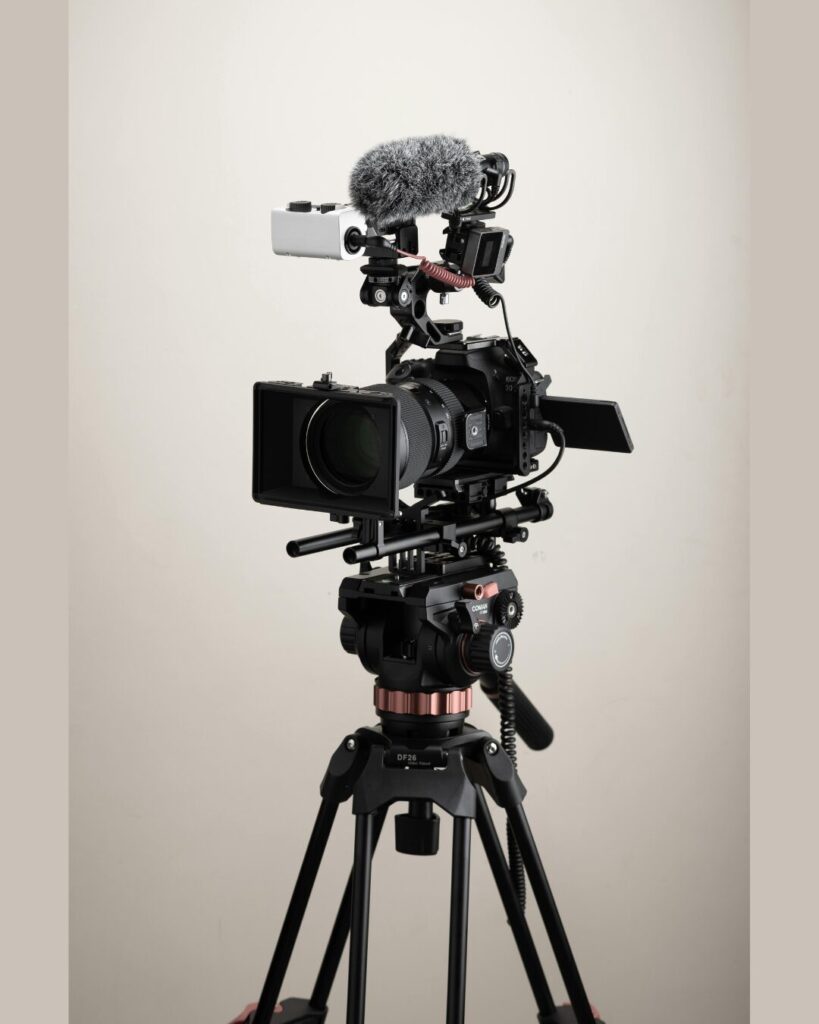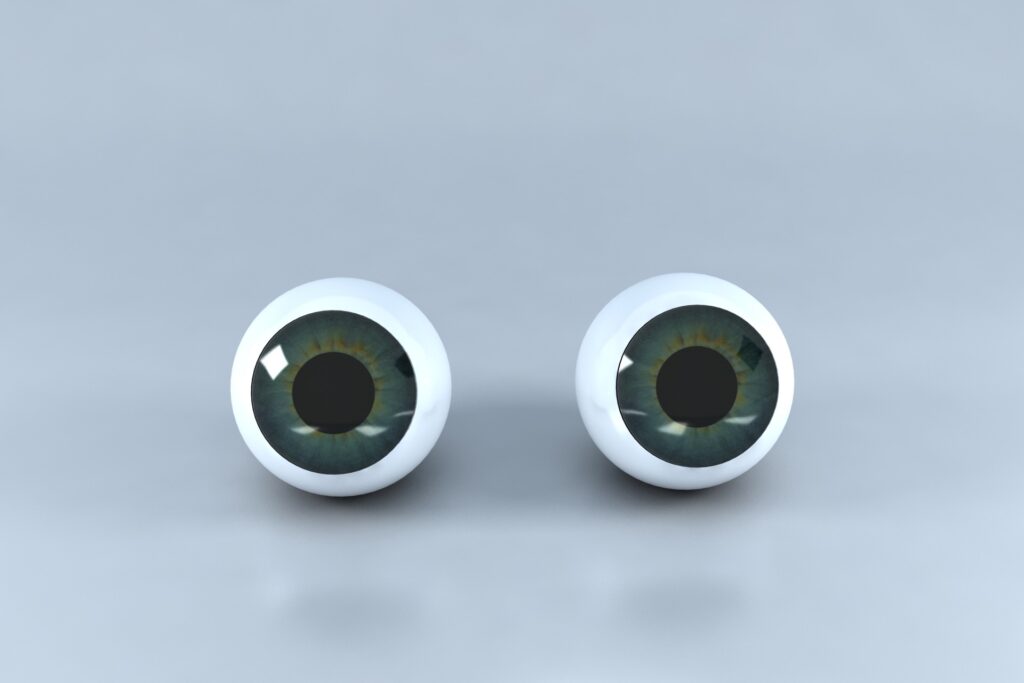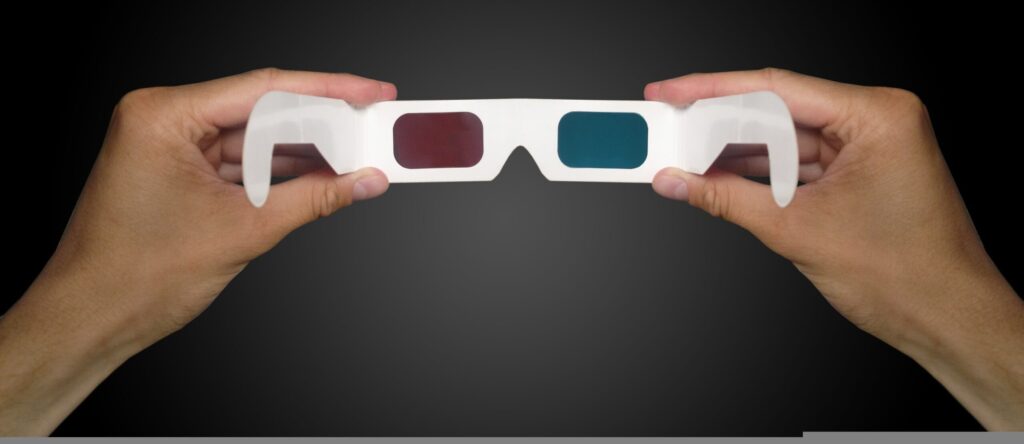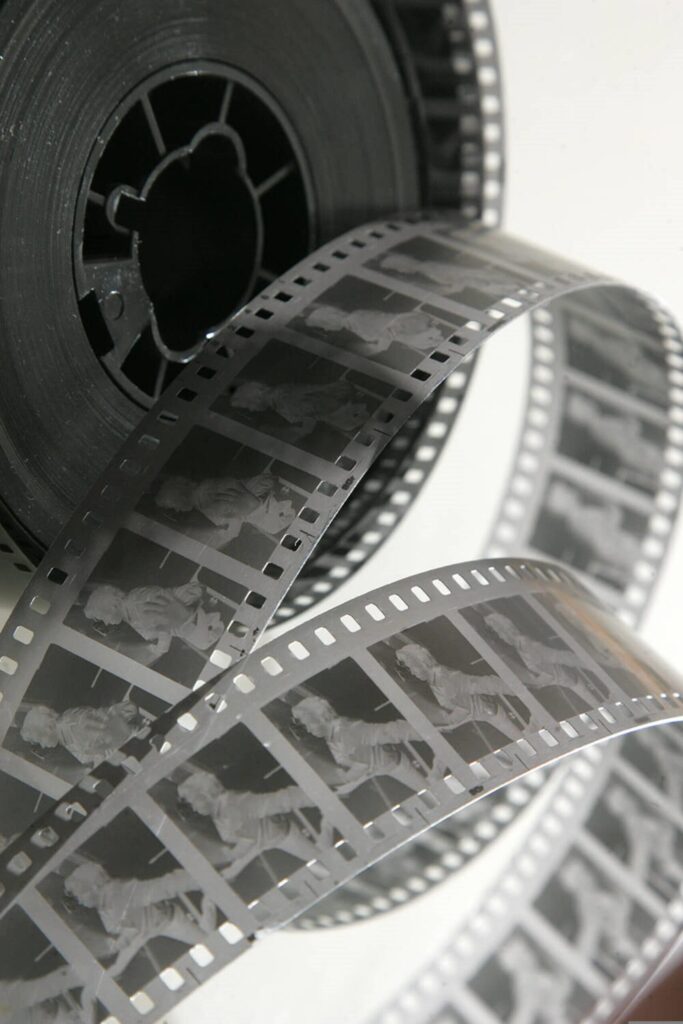When filming in 2D, you have one camera lens that captures the image or video.

With 3D, there are two camera lenses that capture the image or video.

This mimics the way the human eyes work with a left eye image and a right eye image. The left and right eye images are blended together in a person’s head to form one 3D image.

With movies or pictures, the projector must blend the two images from the two camera lenses to form one image. The traditional way to do this is to project the left eye/right eye image on top of each other, then to use 3D glasses to filter the two images so the person receives the left eye images through the left part of the 3D glasses (red filter) and the right eye images through the right part (blue filter) of the 3D glasses. The filter blocks the other eye’s images to help the human brain to focus on the correct images for the correct eye.

This means a 3D film will have two film reels (a left eye and a right eye) which causes double the print costs (due to the need to print a left eye reel and a right eye reel) and additional costs for 3D projectors and 3D glasses. Other companies have played around with different technology to create 3D images and films.


Digital has helped with this problem because it captures two images simultaneously, then blends them in the computer or though the 3D projector. Unfortunately, the images can then become very fuzzy or pixelated.

This leads to a problem when the image is projected on a larger screen such as IMAX. Filmmakers need to use celluloid film in order to keep the image as clear as possible. But who wants to use that anymore?
The solution?
3D Single Film Strip Technology
